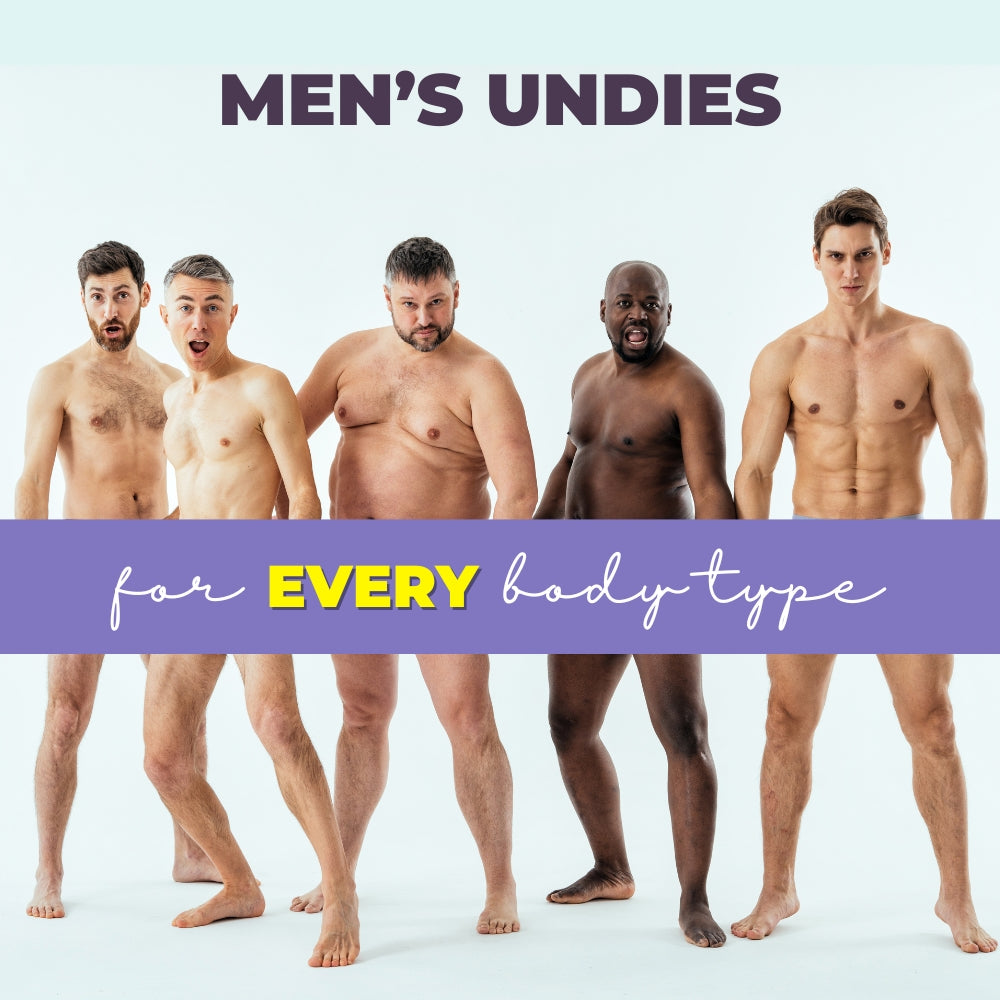
A Beginner's Guide to Men's Underwear: Exploring Different Styles, Fabrics, and Fits
Share
When it comes to dressing, most of us focus primarily on the clothes we wear on the outside. However, if you've ever spent a day squirming in uncomfortable underwear, you know that what lies beneath is just as (if not more) important.
Choosing the right underwear is a task that deserves more consideration than it usually gets. After all, this is the first layer of clothing that comes in contact with your skin. An ill-fitting pair or one made from an unsuitable fabric could leave you feeling uncomfortable all day or even lead to health issues over time.
In the coming sections, we will explore different styles of men's underwear, delve into the fabrics used, and discuss how to ensure the right fit. We’ll also share some expert tips, best practices, and hopefully, help you avoid the discomfort Mike had to go through. So, whether you're replenishing your drawer, looking for workout or travel-specific options, or simply curious about what's out there, this guide is for you.
Understanding Different Styles
Underwear, seemingly simple at first glance, is an intricate world of its own. There's a plethora of styles available, each designed for specific needs, occasions, and preferences. Here, we will explore some of the most common styles of men's underwear and highlight their unique features.
Briefs: Commonly known as 'tighty-whities', briefs are a classic in the men's underwear space. They provide excellent support and a neat fit. Briefs are a great choice for daily wear and for activities that require a lot of movement. They come in low-rise, mid-rise, and high-rise options, allowing you to choose the one that best fits with your wardrobe.

Boxer Trunks: A modern take on classic underwear styles, trunks are shorter than boxer briefs and a bit square in appearance. They're well-suited to tighter trousers or low-rise jeans, offering a sleek silhouette and ample support.

Boxer Briefs: Boxer briefs bring together the best of both worlds - the support of briefs and the coverage of boxers. They're versatile and suitable for all occasions, making them a staple in many men's underwear collections.

Boxers: If comfort and freedom are what you seek, boxers are your go-to option. With a loose fit and ample coverage, boxers offer the highest breathability. They're a great choice for lounging or for those who prefer a relaxed fit. However, they may not provide the support needed for athletic activities or snug-fitting trousers.
Now, with this understanding of different styles, let's dig a little deeper and discuss the fabrics used in men's underwear.
Delving into Fabrics
As much as the style matters when it comes to underwear, the fabric plays an even more significant role. It affects everything from comfort and breathability to durability and maintenance. Some of the most common fabrics used in men's underwear are…
Cotton: Lightweight, breathable, and soft to the touch, cotton is a classic choice for underwear. It's ideal for everyday wear, thanks to its excellent moisture-wicking properties. However, it may not be the best choice for high-intensity physical activities, as it can retain moisture.
Polyester: Known for its durability and wrinkle resistance, polyester is often used in sportswear. It dries quickly and retains its shape well, making it a good choice for workout underwear. However, it's less breathable than cotton, which may cause discomfort during extended wear.
Silk: The epitome of luxury, silk underwear is smooth and incredibly comfortable. It's an excellent choice for a special occasion but requires careful handling and washing.
Nylon: Nylon is durable, quick-drying, and retains its shape well. It's often used in a blend with other fabrics to improve their strength and durability. However, like polyester, it's less breathable than natural fabrics.
The fabric of your underwear should complement your daily activities. If you lead an active lifestyle, choose a fabric that wicks away moisture. If comfort is your priority, a soft, breathable fabric like cotton may be ideal.
Ensuring the Right Fit
Even the most high-quality underwear can leave you uncomfortable if it doesn't fit right. And we're not just talking about waist size. The right fit involves a few more dimensions you might not have considered. Here are some tips to ensure your underwear fits just right.
Waist Size: This one's pretty straightforward. The waistband of your underwear should sit snugly on your waist without digging into your skin or falling down. Most brands offer sizes based on waist measurements, so take the time to measure yourself before purchasing.
Leg Openings: The leg openings should be firm enough to stay in place but not so tight that they cut into your skin or restrict movement. Too loose, and they'll bunch up under your pants; too tight, and they'll create visible lines.
Pouch Size: Men's underwear often comes with a contoured pouch for support. Make sure it's spacious enough to be comfortable but also provides the necessary support.
Coverage: Consider how much coverage you want from your underwear. This is mostly a matter of personal preference. Whether you prefer the full coverage of a boxer or the high cut of a brief, make sure you're comfortable with the amount of skin your underwear shows or covers.
But ensuring the right fit is just the first step. To maintain that fit, proper underwear care is essential. That brings us to the topic of our next section: best practices for underwear maintenance.
Best Practices for Underwear Maintenance
The longevity of your underwear isn't just about the quality of the product you buy, but also about how you care for them. Here are some best practices to help maintain your underwear and keep them in top shape for longer.
Washing: Always refer to the care label on your underwear for washing instructions. Generally, cotton underwear can be machine washed with similar colors. However, fabrics like silk require a gentle hand wash. Using a laundry bag for your underwear can prevent them from tangling and stretching in the wash.
Drying: High heat can degrade the elastic in your underwear, leading to a loose fit over time. Unless the care instructions specify otherwise, it's best to air dry your underwear. If you must use a dryer, choose a low-heat setting.
Replacing: Even with the best care, underwear doesn't last forever. Over time, the fabric may thin, and the elastic may lose its stretch. As a general rule, it's a good idea to replace your underwear every six months to a year, depending on how often you wear each pair.
Storing: To prevent your underwear from getting crushed or stretched out, store them flat in a dedicated drawer. Keeping different styles separately can make it easier to find what you're looking for.
Your underwear experiences a lot of wear and tear, not just from wearing, but also washing and drying. Taking a few extra minutes to care for them properly can extend their life significantly.
With these best practices, you can ensure that your underwear remains comfortable and supportive for as long as possible.
Conclusion
Choosing the right underwear is a task that deserves more attention than it usually gets. From the fit to the fabric, style to maintenance, every aspect plays a crucial role in how comfortable you feel throughout the day. With this all-in-one guide, we hope you're better equipped to make informed decisions the next time you're shopping for underwear.
Remember, comfort should always be your priority when it comes to underwear. Choose styles and fabrics that match your lifestyle and preferences. And once you find the right pair, remember to care for them properly to get the most wear out of them.
At IDENTITY Apparel, we're proud to introduce this new addition of daily essential wear to our product collection! These are made from high-quality fabric blends to ensure maximum comfort and durability.
We appreciate you taking the time to read this guide. We can't wait for you to try our new collection and experience the IDENTITY Apparel difference firsthand. Here's to many days of comfort and style!
